Kyoto Temples and Shrines 京都の寺院と神社
|
Title   • File Name • File Name   • Date • Date   • Position • Position   |
|

Path to Kinkakuji Gold Pavilion entrance path in autumn.
|
|

Kinkakuji Gold Pavilion 金閣寺
|
|

Kinkakuji is one of the world's most picturesque buildings.
|
|
|

Kinkakuji Gold Pavilion, Kyoto
|
|

Golden phoenix on the roof of Kinkakuji.
|
|
|

Rear view of Kinkakuji
|
|

Path to Kiyomizu-dera is a slope lined with souvenir shops, a tourist trap.
|
|

Gate
|
|

Kiyomizu-dera Gate
|
|

Start of the Blue Dragon dance (Seiryu-e) at Kiyomizu-dera, Kyoto.
|
|

This is Seiryu-e, a blue dragon dance held near the steps on March 15-17, April 3, and Sept. 15-17 at 2 pm. 青龍会
|
|

The Seiryu-e includes a procession of native-attired men.
|
|
|
|
|
|
|
|
|

Deck of Kiyomizu-dera main hall
|
|

Kiyomizu-dera temple on wooden stilts. Kiyomizu-dera belongs to its own independent Buddhist sect.
|
|

Kiyomizu-dera is the 16th temple in the Saigoku Western Japan pilgrimage circuit. The Hondo main hall dates from 1633.
|
|
|
|
|

Kyoto Tower in the distance as seen from Kiyomizu-dera.
|
|

Otowa no Taki waterfalls 音羽の滝
|
|

Otowa no Taki waterfalls
|
|
|
|

Jishu Shrine is also within the Kiyomizu-dera grounds. This shrine is dedicated to love matches and marriage. The statue is Okuninushi-no-Mikoto, god of love matchmaking.
|
|

Jishu Jinja Shrine 地主神社
|
|

We noticed mostly young women and girls were praying at this shrine. Very few guys.
|
|
|
|
|
|

Talisman for good love matches
|
|

One love stone. If you can walk from this stone to the other one blindfolded, you will find love by yourself.
|
|

The other love stone.
|
|

The woman reached the other stone and will find love.
|
|
|

Kiyomizu temple with cherry blossoms lit up at night.
|
|

Kiyomizu temple with cherry blossoms lit up at night.
|
|

Kiyomizu temple with cherry blossoms lit up at night.
|
|

Kiyomizu temple with cherry blossoms lit up at night.
|
|

Yasaka Shrine anchors one end of Kawaramachi.
|
|

Yasaka Shrine in Gion district of Kyoto. This is the main shrine patronized by the Gion geisha.
|
|

Gate to Yasaka Shrine. The shrine also holds the annual Gion Matsuri Festival in July featuring ornate floats paraded around the city.
|
|
|

Yasaka Shrine's Honden Hall.
|
|

Women dressed as maiko walk around Yasaka Shrine and pose for tourists. (Not real maiko.)
|
|
|

This rear torii goes to Maruyama Park.
|
|

Directly behind Yasaka Shrine is Maruyama Park which has a few cherry trees. 円山公園
|
|

Sakura in Maruyama Park, Kyoto.
|
|

Statue of Sakamoto Ryoma in Maruyama Park.
|
|

Hanami picnickers during cherry blossom season in Maruyama Park.
|
|

The famous cherry tree in Maruyama Park in Kyoto.
|
|

It looks different from different angles.
|
|
|

A large crowd gather around the tree when it is in bloom.
|
|
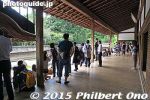
Ryoanji temple
|
|

Ryoanji temple crowded with people.
|
|
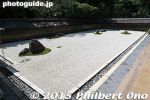
Ryoanji temple in Kyoto has Japan's most famous rock garden.
|
|

Ryoanji has too many tourists to make it a place to meditate in Kyoto.
|
|
|
|
|

Ryoanji rock garden.
|
|

Ryoanji rock garden. The cherry tree is beautiful when it blooms.
|
|
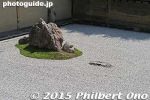
Ryoanji rock garden.
|
|
|
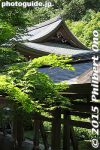
Ryoanji
|
|
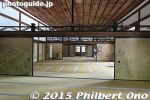
Inside Ryoanji
|
|

Gate of Higashi Hongwanji temple
|
|

Higashi Hongwanji in Kyoto is not included in the World Heritage Site of Kyoto temples.
|
|

Higashi Hongwanji's Amida-do Hall undergoing roof work to be completed in 2011.
|
|
|

My favorite sight at Higashi Hongwanji in Kyoto is these giant ropes made of donated human hair. The ropes were used to reconstruct the temple during dire times.
|
|
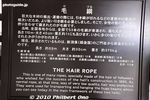
About the hair rope.
|
|
|
|

One end of Sanjusangendo Hall.
|
|

Sanjusangendo in Kyoto is famous for its numerous Kannon statues.
|
|

Sanjusangendo. Unfortunately, photography is not allowed inside.
|
|

Sanjusangendo
|
|
|
|